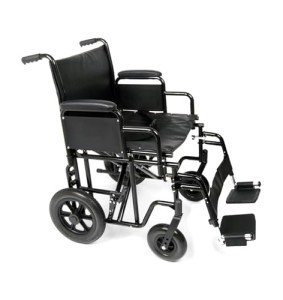7 Secrets About Bariatric Wheelchair 24 Inch Seat That Nobody Will Share With You

Bariatric Wheelchair Seat Width
Seat Width
Having the correct seat width is essential to wheelchair users who invest longer periods in their chairs. Too narrow a seat will cause pressure on the hips and thighs which could lead to sores or pressure points. Having too wide a seat can likewise make it hard for the user to reach the hand rims to move themselves or maneuver in small areas.
To determine the correct seat width an individual would rest on a chair usually and have their measurement taken across their lap at the largest point which is typically their hips. A wheelchair measuring tape can be utilized to determine this, however a backyard stick is chosen as it prevents individuals from covering the tape around their hips which would provide an inaccurate result.
The basic wheelchair seat width is 16" (narrow grownup), 18" (basic grownup), and 20" (broad grownup). For bariatric patients, a 24" seat is offered. This heavy-duty extra broad bariatric wheelchair from Medline features swing-away footrests, a carbon steel frame with rust- and chip-resistant chrome plating, and easy-to-clean vinyl upholstery. It has a weight capacity of 500 pounds.

bariatric wheelchair scale , the seat depth of a bariatric wheelchair was included 2" to the measurement taken at the user's widest point (normally their hips). This was indicated to accommodate additional layers of clothing that might be worn during cold weather. However, this practice is ending up being less typical as wheelchair users are able to invest more time inside and are not wearing long coats. This makes the seat depth of a chair less important when selecting a bariatric wheelchair. However, it is still important to pick a choice that offers adequate support for larger users.
The Medline folding extra large bariatric manual wheelchair features a comfy 24" seat width and a heavy-duty slide tube silver vein frame. It also has an adjustable axle and tool-free raising legrests.
Seat Height
When it pertains to determining the right wheelchair seat width you should always measure from the user's best point which is typically their hips. You will likewise need to think about whether the user is going to be wearing a winter coat as this may include 2" to the width needed.
When bariatric wheelchair scale remains in usage it ought to just be operated on level surfaces with the wheel locks completely engaged. This is to avoid the chair from being able to move inclines that are 10 degrees or greater. It is likewise essential to keep in mind that any activity that may move the center of gravity in the chair need to be done with care. bariatric wheelchair recliner consists of reaching for items that need the individual to lean out of their seat or trying to stand from it.
Whenever you have the chair in usage it is suggested that you regularly inspect it for damage and lube any locations that are deemed essential. For instance, the casters need to be lubricated by removing the caster fork and utilizing a multi-purpose grease to use to the caster stem bearings. Similarly, the foot plates can be changed by loosening the bolt and then moving them to the preferred position. This enables the feet to sit comfortably on the footplate and avoids any pressure points from forming. This can be extremely unpleasant for the user and if left ignored, can result in push sores.
Weight Capacity
Bariatric wheelchairs are designed to support more weight than basic wheelchairs. This makes them tougher and much better geared up to deal with falls. They are also usually bigger and broader, making them less maneuverable in tight areas than standard wheelchairs. They need vehicles with special ramps and lifts to pack them, along with motorists who know how to finest transport them from one location to the next.
When picking a wheelchair, consider its weight capacity as it will be the main determining consider whether it will accommodate your traveler's needs. The weight capacity of the chair is frequently noted as a fixed load, suggesting that it shows the quantity of weight the chair can conveniently hold while stalling. Nevertheless, some producers also note an active load that is based upon a drop test and can replicate the impact of someone taking a seat in the chair. This might be a more trusted measurement of the weight limit, depending upon your needs.
If you plan to carry out activities that shift your center of mass in the seat (such as grabbing objects), be sure to have front casters pointed in a forward instructions and wheel locks engaged so the chair will not tip over. Also, inspect that casters are lubricated frequently to prevent excessive wear and abrasions. The lubrication procedure involves getting rid of the fork, separating the caster from the wheel, and greasing the caster stem bearings with top quality multi-purpose grease.
